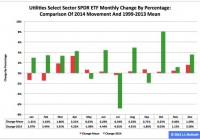2 New Alternative ETNs Launched In December
A pair of new exchange-traded notes (ETNs) launched last month: One providing investors with the price return of a diversified basket of MLPs; the other a targeted-volatility and VIX “roll yield” strategy. ETNs, which are unsecured notes backed by the faith and credit of the issuer, trade on exchanges like shares of stock or ETFs. The Credit Suisse S&P MLP Index ETN (NYSEARCA: MLPO ) The Credit Suisse S&P MLP Index ETN debuted on December 2. It provides exposure to the price return of the S&P MLP Index, which includes both MLPs (master limited partnerships) and publicly traded LLCs (limited liability companies). Index components must be from either the energy sector or gas-utility sector, with market capitalizations of at least $300 million. The index is cap-weighted, but no constituent may constitute more than 15% of the total index, and constituents that account for more than 4.5% may not combine to account for more than 45%, as a group. Although the ETN launched last month, the index has been calculated live since September 6, 2007. For the five years ending November 28, 2014, the total return S&P MLP Index returned an annualized 17.80%, besting the S&P 500’s total return of 15.45%. However, the new Credit Suisse S&P MLP Index ETN provides exposure to only the price return of the index, which returned 11.18% for the five years ending 12/31/14. The wide difference between the total return and price return of the index is due to the large yield distributed by MLPs. The net-expense ratio of MLPO is 0.95%. Investors looking for a total return on the S&P MLP Index can look to the iPath S&P MLP ETN (NYSEARCA: IMLP ), which was launched in on January 3, 2013 and carries an expense ratio of 0.80%. As of November 28, the ETNs five largest holdings were Enterprise Product Partners (NYSE: EPD ), Energy Transfer Equity (NYSE: ETE ), Plains All American Pipeline (NYSE: PAA ), Magellan Midstream Partners (NYSE: MMP ), and Energy Transfer Partners (NYSE: ETP ). The new ETN joins the ranks of nine other alternative ETNs offered by Credit Suisse: Long/Short Equity Index ETN (NYSEARCA: CSLS ) Equal Weight MLP Index ETN (NYSEARCA: MLPN ) Merger Arbitrage Index ETN (NYSEARCA: CSMA ) Leveraged Merger Arbitrage Index ETN (NYSEARCA: CSMB ) Market Neutral Index ETN (NYSEARCA: CSMN ) Gold Shares Covered Call ETN (NASDAQ: GLDI ) The Credit Suisse Commodity Benchmark ETN (NYSEARCA: CSCB ) Silver Shares Covered Call ETN (NASDAQ: SLVO ) The Credit Suisse Commodity Rotation ETN (NYSEARCA: CSCR ) For more information about MLPO, read the fund’s prospectus . The ETRACS S&P 500 VEQTOR Switch ETN (NYSEARCA: VQTS ) The ETRACS S&P 500 VEQTOR Switch ETN launched on December 3. The ETN is linked to a volatility-targeted S&P 500 index strategy and a long/short VIX futures strategy. The VIX futures component is intended to capture VIX “roll yields” and volatility drops when allocated to short positions in VIX futures; and VIX upside during volatility spikes when allocated to long positions in VIX futures. The ETRACS S&P 500 VEQTOR Switch ETN tracks the performance of the S&P 500 VEQTOR Switch Index, which seeks to “simulate a dynamic portfolio that allocates between equity and volatility based on realized volatility in the broad equity market.” The index launched on November 17, 2014, and has no prior performance history. The ETN’s net-expense ratio is 0.95%. For more information, download a pdf copy of the fund’s prospectus .
